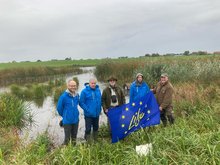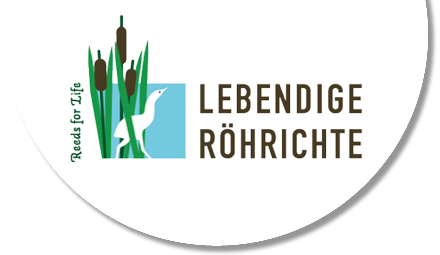The focus of the Life project is on the “Bienener Altrhein, Millinger and Hurler Meer and Empeler Meer” FFH area. This area is mainly characterised by the FFH habitat type “natural eutrophic lakes and oxbow lakes” occupying 160 ha, which thus accounts for around 16% of this habitat type in North Rhine-Westphalia. However, the conservation status is classed as unfavourable to poor. The focus of the project is therefore on promoting reeds and floating leaf vegetation, whose populations have key functions in the quality of the habitat type and, therefore, the conservation area.
Planting various varieties of reeds is seen as the most important measure. The bullrush populations have been falling especially steeply for many years. Preliminary examinations by the Nature Conservation Centre have shown that the main reason for this is the plants being eaten by coypu (Myocastor coypus). The literature also shows that it is fond of plants with floating leaves, too. The coypu is a species originally native to South America that is considered invasive here. Its eating habits continue to have a negative impact on reed development. The permanent removal of the coypu from the conservation area is therefore of central importance to the success of the project. Moreover, willow bushes are also spreading in some reed locations. There should be cleared to counteract the suppression and once again secure sufficient space for the reed vegetation. Open areas of mud are needed, especially in the late summer, so that the reeds can germinate. There have been too few of these in recent years. A seasonal adjustment of the water level of the Bienen Old Rhine is therefore also planned as one measure in the project.
Neuigkeiten
Besuch aus Slowenien

In dieser Woche waren der Direktor des Natura 2000 Gebietes „Landschaftspark Ljubljanaer Sümpfe - Kr…
Termine

Lebendiges Röhricht - Blaukehlchen und Co.
20.04.2024 06:00 - 08:30
Exkursion und Vortrag im Rahmen des LIFE-Projektes.
More




